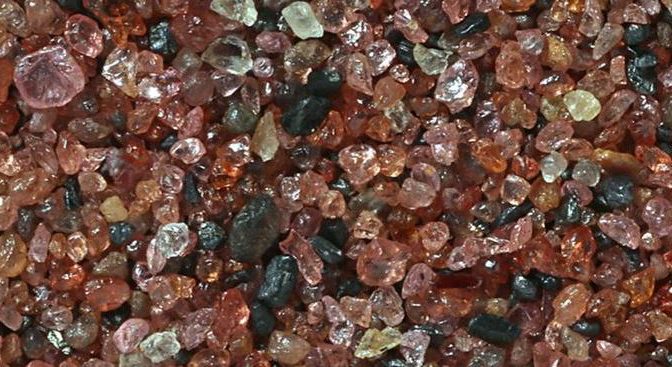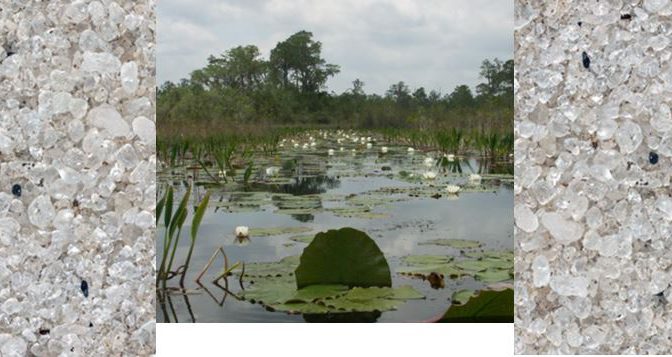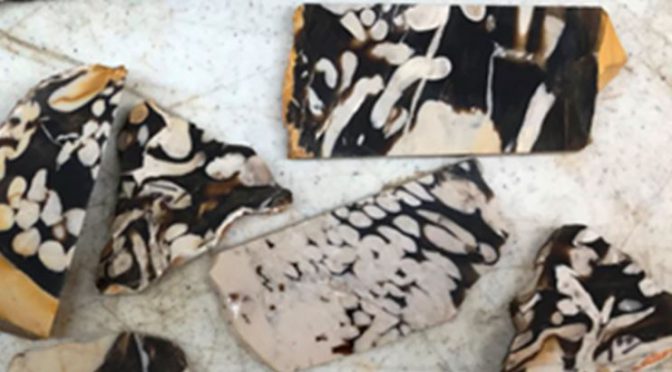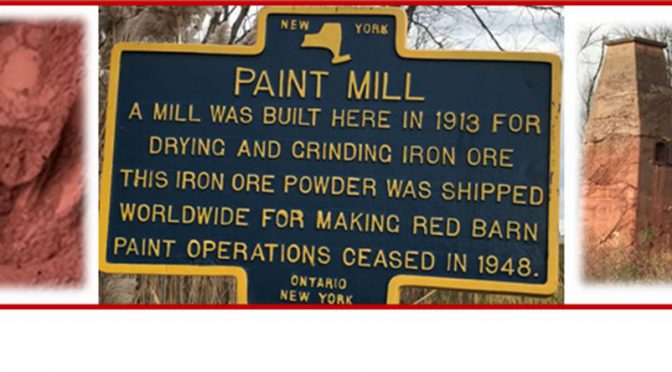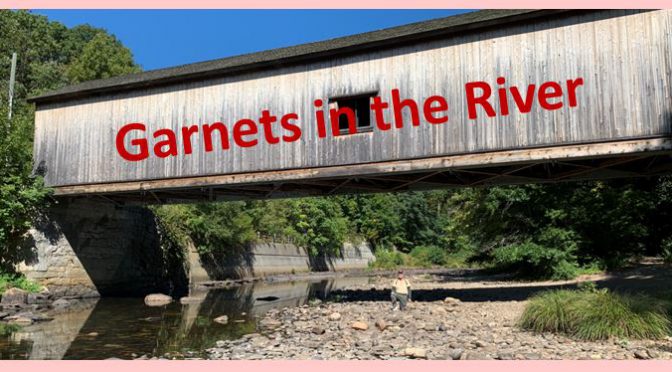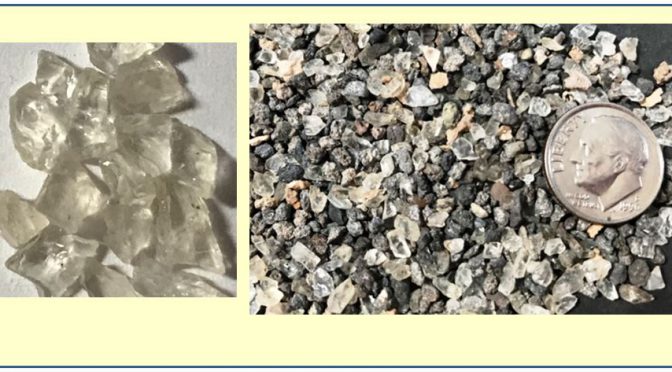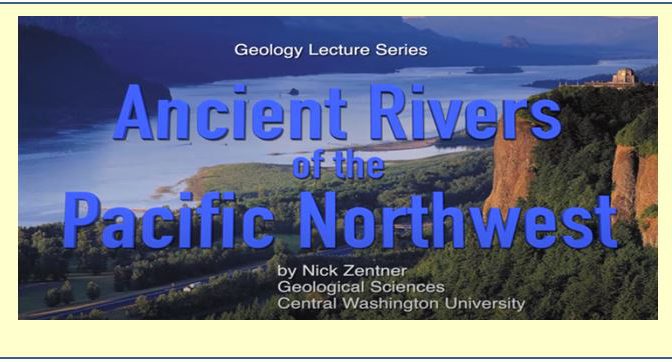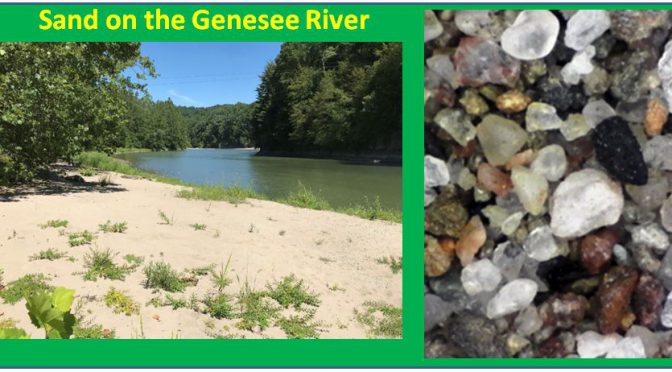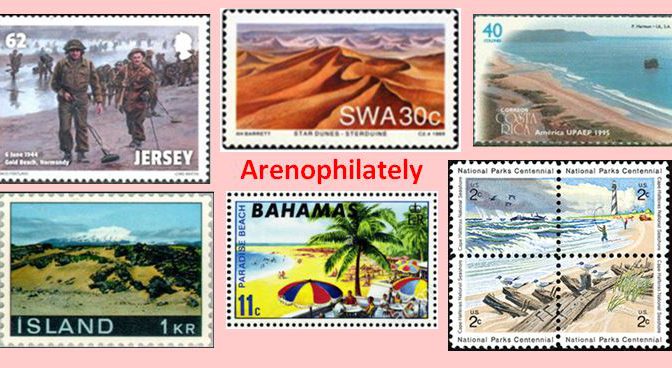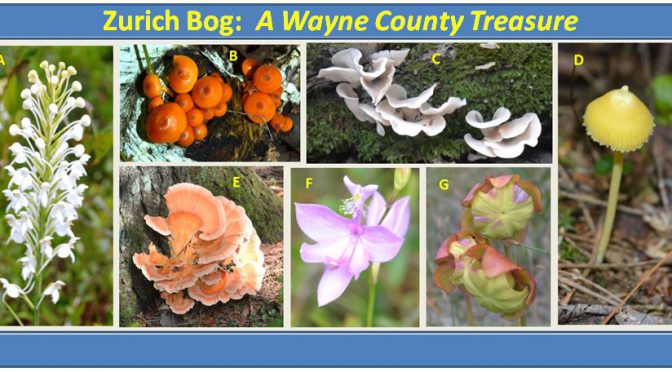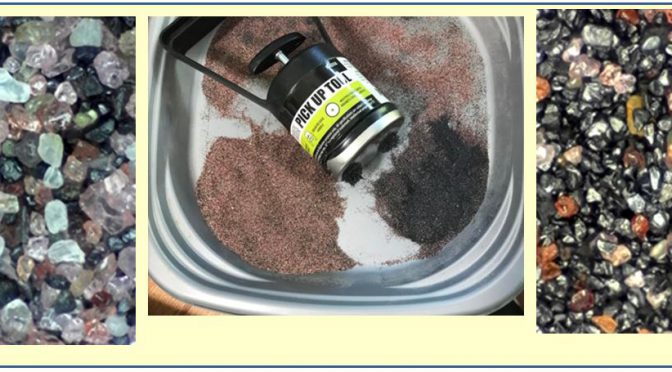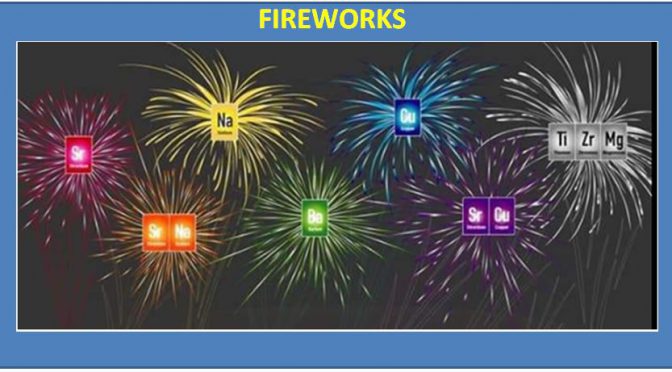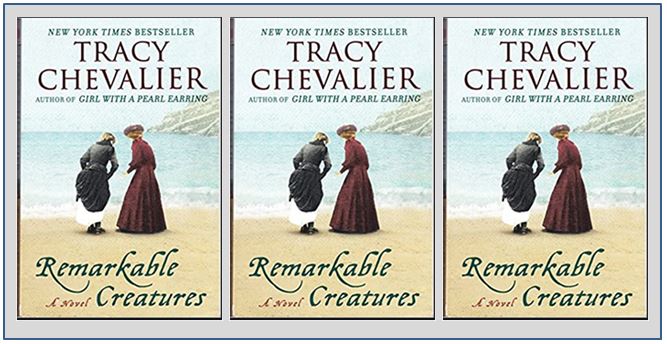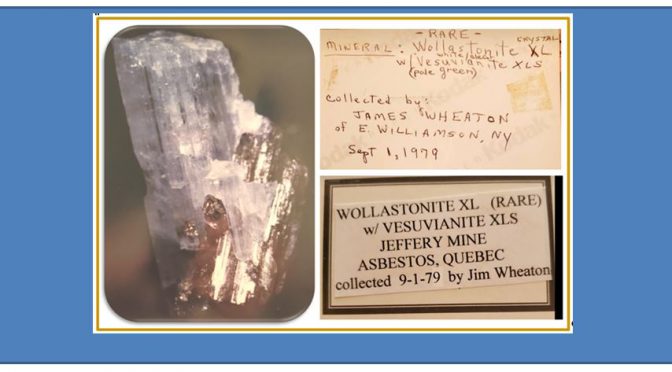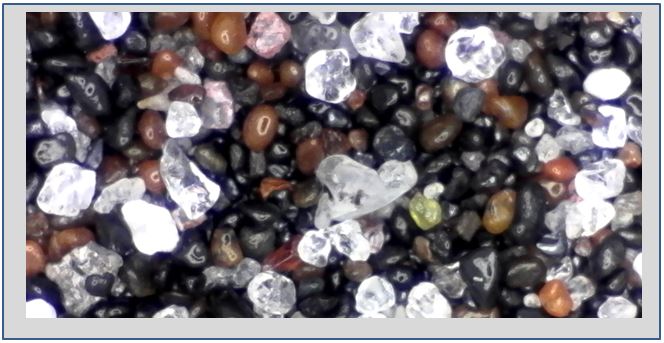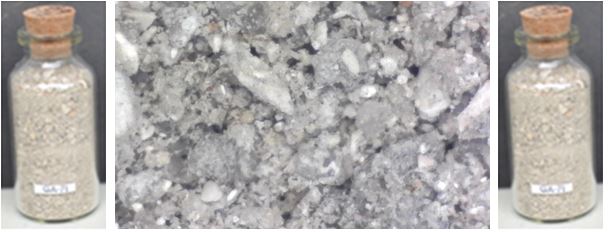On August 6th, 1945, the United States detonated a 5-ton nuclear weapon over Hiroshima, Japan. The result helped end WW2 in the Pacific Arena as Japan surrendered less than one month later, but it was devastating to the city of Hiroshima and its immediate surroundings. Approximately 100,000 Japanese perished in the blast and about 5 square miles of the city were obliterated as ground temperature reached above 1800⁰ C in the firestorm that followed.
Continue reading Sand from HiroshimaA Sea of Garnet Sand
In early 2020, I was comfortably sitting in my man cave planning a September trip to collect beach sands along the coastline of southern New England. While cruising along the shoreline using Google Maps satellite images I spotted a bright red patch of beach near Madison, Connecticut. Zooming in, there seemed no doubt. The beach sand there is red. Could the dominant mineral in that patch of beach be garnet? If it is, this could be a highlight stop along the trip. Continue reading A Sea of Garnet Sand
Sand from a Swamp
In September, I met Leo Kenney at Plum Island in Massachusetts and later at his home northwest of Boston. And yes, we traded sands. One that I came home with intrigued me. It was labeled Floyd’s Island, Okefenokee Swamp, Georgia. From all appearances, it was fine-medium-grained quartz-rich sand, much like one you might find on an ocean beach. But this one was from a swamp. I needed to know more. Continue reading Sand from a Swamp
Peanut Wood
The polished slabs that were raffled at the Wayne County Gem and Mineral Club October workshop are called peanut wood, but they actually have nothing to do with peanuts. Yes, they are petrified wood, so that part is correct, but the white-cream ovoid-shaped markings inside the wood have a rather unique origin. Continue reading Peanut Wood
Ontario Center Paint Mill
I had driven by the sign in the title box dozens of times and often wondered what might be behind the cattails and railroad tracks in Ontario Center. Motivated by the visit to the old Wolcott furnace last month and by the possibility of obtaining a hematite “sand” sample I decided to stop on my next excursion that took me through western Wayne County on Route 104. Continue reading Ontario Center Paint Mill
Garnets in the Salmon River
Article from November 2020 Wayne County Gem and Mineral Club Newsletter
While Linda Schmidtgall liked the garnets weathering from a schist roadcut in Tolland, I believe I have had more fun playing with the garnet-bearing sand recovered from below the Comstock Covered Bridge in East Hampton, CT. Both make great sand samples and both sourced their garnets from the Devonian Littleton schist, a mica- and garnet-rich metamorphic rock formed during the Acadian orogeny (mountain-building event) ~375-325 million years ago. The Acadian event was the third of four orogenies along eastern North America that collectively created the Appalachian Mountains and surrounding terrains.
Utah sunstone
This month I was working with “sand” that was actually too large to be technically called sand. Rather the grains were granules, the finest size fraction of gravel. I had obtained 200ml samples of four different gravels from Ed Tindell, a Texas collector, trading him gravels from northeast locations I had visited. One of my new samples was from Sunstone Knoll in Millard County, Utah. The gravel had accumulated in the alluvium shed from adjacent Sunstone Knoll. Ed had size-sieved a large sample and the material he sent me was from the 1/16” to 1/8” (1.7-3.2mm) size range, bridging the upper limit of sand, but mostly fine gravel or granules (see chart at the end of the article).
A Lecture Review: Ancient Rivers
I have featured book reviews multiple times on my blog, and even had one music review. Given the unusual circumstances of a stay at home pandemic, it only seems reasonable to offer a Lecture Review. I stumbled on this one circuitously through a Facebook Group of which I am a member,
Nick Zenter is a Professor of Geology at Central Washington University in Ellensburg, WA. He has produced a number of online lectures, both for his students and for the general public and it seems many of them are readily available to all who wish to learn a bit of geology. I’ve watched a couple so far and will likely watch more. Continue reading A Lecture Review: Ancient Rivers
A Tribute to Marion Wheaton

Marion Wheaton, WCGMC co-founder along with her late husband Jim, passed away last month at the age of 89. She is survived by her daughters Nancy and Diane, her sister Barbara, her brother Paul, many nieces and nephews, and by a host of WCGMC rockhound friends.
In addition to being a co-founder of our club, Marion served as Editor of this newsletter for many years. Marion and Jim volunteered many hours displaying and educating young and old all around Wayne County and beyond with their mineral collection and Mastodon bones. Her daughter Diane tells us that Marion was buried with a Herkimer diamond, her Wayne County Gem & Mineral Club pin, and a beautiful pink rhodochrosite brooch necklace she always wore. Continue reading A Tribute to Marion Wheaton
Collecting a River
The Genesee River ends in my hometown of Rochester, New York completing a 160-mile journey from Potter County, PA. During its course, the river falls some 2250’. Several notable waterfalls mark its journey north.
If you read my blog, you might know that I have become an arenophile, or more simply, a sand collector. In that endeavor, I have started to collect sand along the path of the Genesee River as it crosses across mostly rural farmlands and suburban communities. Rochester is the only major city graced by its presence. The surficial geology is mostly glacial deposits (moraines, outwash, etc.) of highly variable composition, but the river also cuts into Paleozoic sedimentary rock below that is Pennsylvanian to Ordovician in age, a rock record of about 140 million years. The major waterfalls mark resistant limestone and dolostone units; intervening shale units less resistant to erosion generate gentler topography.
Arenophilately
I wrote this article for the Spring 2020 issue of Philagems, the newsletter of an International Group of stamp collectors with an interest in “Gems. Minerals, and Jewelry on Stamps.”
I have a confession to make. I have become an arenophile. Fortunately, in many places it is not illegal (unless trespassing while doing it), and it should not be harmful to my health. I would say it is generally not contagious, but I did catch it a year ago when introduced to the hobby at a local rock club meeting. I did not realize I was hooked until the summer of 2019. While collecting minerals on trips in Maine and Michigan, I kept my eyes open for sands to collect and proceeded to fill quart freezer bags at a few dozen locations along lakes, rivers, and from glacial deposits. You see an arenophile is a lover of sand. The word is derived from the Latin “arena” (sand) and the Greek ”phil” (love).
But this is a philatelic newsletter, what does this have to do with stamps, and more specifically minerals on stamps? Well, sand is nothing more than a pile of mineral grains, and there are certainly many worldwide postage stamps depicting sand. The most popular thematic stamps depicting sand are, of course, beaches, like several of those depicted in the header. But there are also river sands, land sand, and wind-blown sand dunes such as those on this South-West Africa (now Namibia) stamp, also in the header. Why not collect and display sands from various beaches next to stamps showing these beaches? And why not call it arenophilately? Would this not be a reasonable offshoot of a group specializing in minerals on stamps? There are actually some very unique and beautiful minerals hidden in the sands of the world. Continue reading Arenophilately
Zurich Bog
There are no rocks, no minerals, and unless there are buried mastodons, there are no fossils. But that does not mean that Zurich Bog is not an interesting place for a retired geologist to spend a few hours while remaining near home during this summer of social distancing. The small protected wetland preserve is just 8 miles north of Newark and 7 miles south of Sodus, almost smack in the middle of Wayne County, New York. Continue reading Zurich Bog
Heavy Sands, Hamlin, NY
Last July I collected one of my first sand samples, locating garnet-magnetite sands in a small cove east of Hamlin State Beach on Lake Ontario. It turned out to be one of the more popular trade sands I have and although I still had some I decided to venture out again this year. I was curious whether the accumulation would still be there, virtually one year later. Perhaps last winter’s storms removed the heavy sands and I might have to search anew. But they were right where they had been a year ago and even more stratified.
Fireworks!
On July 4th, we celebrated our nation’s independence with fireworks. This year many public displays were canceled, but if your neighborhood was like mine, there were still plenty of pyrotechnics decorating the evening sky. The wonderful colors are all part of simple elemental chemistry and most owe their origin to minerals and chemical compounds (metal salts) produced from those minerals.
Book Review: Remarkable Creatures
A while back I wrote an article about paleontologist Mary Anning and the postage stamps that honor her amazing discovery of marine reptiles in the seaside cliffs of southern England. After reading the story, Donna Smith informed me of a historical novel she had enjoyed about Mary’s discoveries and her life in early 19th century England. I am not an avid reader of historical fiction, but I decided to give this book a try, ordering a copy online and putting it on the top of my June reading list.
“Remarkable Creatures” was written by Tracy Chevalier and published in 2009. It was listed on the New York Times Bestseller list. I found the narrative very easy to read as the author mixed actual geologic and historic events into the lifestyles and culture of the time. Women were not expected to hunt fossils, much less study them, and Mary Anning was not of the “proper class” to be taken seriously or given credit for her accomplishments regardless of her gender.
A Bit of WCGMC History
Some of you may know that the Wayne County Gem and Mineral Club was founded in 1974. You may also know that Jim and Marion Wheaton were the driving force behind its creation and its growth. Jim passed away in 2011, but his wife Marion continues to read our newsletter and follow the club’s events and adventures. Their daughter, Diane, also shows Marion Facebook posts that our members post.
Well, Diane saw my Facebook post in mid-June when I sought input for the next month’s newsletter. Coincidentally, she was also organizing pictures that her 89-year-old mother had accumulated. She picked out one of Jim Wheaton’s mineral pictures and wondered if we might be interested in seeing a specimen Jim had collected on a WCGMC field trip over 40 years ago. What a wonderful thought and such a fine gesture.
My 2020 Vision – Revisited
Those of you who are studious readers of this esteemed blog may recall I wrote an article for the entitled “My 2020 Vision”. The theme revolved around the word “more”. I planned to do more collecting, more giving, more writing, more research, and to have more fun with club activities. It appears I overlooked something when I scripted my vision. I did not foresee a global pandemic and all its ramifications. As a result, I have only achieved 40% efficiency. Yes, to more research (I think) and certainly yes to more writing, but the opportunities to collect and give rocks away and to have fun during club events sort of evaporated. The entire season of spring passed us by without a single club event.
A Phosphatic Sand Beach
Some sand can be appreciated purely for its color and appearance. Other times the shapes of the grains or the overall texture of the sand makes it stand out when compared to others. Of course, a unique geology or an unusual mineral component can help to distinguish a sand also. Occasionally a beach comes along where the sand displays all three attributes. I consider the phosphatic sands from Caspersen Beach in Venice, Florida to be such a sand.
That’s a Lotta Water
Wayne County has over 35 miles of shoreline on Lake Ontario, the easternmost of the five North American Great Lakes. Most of us have favorite beaches along the lake for hiking and for rock collecting. Others seek the solitude of a kayak trip on a warm summer day. From a safe distance, we watch Mother Nature beat up the coastline each winter and patiently wait for spring and new adventures. Of course, we’ve also been known to trek west and visit some of those other large lakes.
Sure we all know the Great Lakes are large and very deep and we know they were carved out by glacial action just a bit more than 10,000 years ago. But I wonder if we truly appreciate just how large and how big these lakes are? And just how much water they contain. With a bit of time on my hands when I was not traveling as I would have liked, I thought I’d try to compile some of the numbers and put our little backyard pond into proper perspective. Continue reading That’s a Lotta Water
Kaolinite
My only “sand” sample of kaolinite, shown in the title box above, is gray. It is from a kaolin quarry in Gordon, Georgia and came to me courtesy of a mail trade with the Georgia Mineralogy Society. The kaolinite in central Georgia is Late Cretaceous in age (~70 million years old) and is sedimentary in origin, derived from the weathering of igneous rocks. This region across Georgia may be better known to fossil collectors seeking terrestrial mammal bones and teeth from the overlying Eocene Formations (Rhinehart, et. al. 2019).

